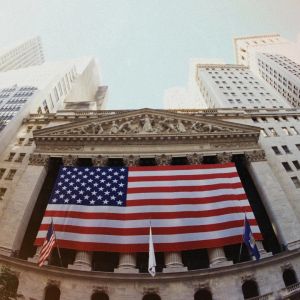The biggest names in finance are bailing on the US. Wall Street’s wealthiest institutions are cutting down on their dollar holdings and piling into European markets, as new data shows a massive pullback from US equities and bonds. According to the Financial Times, this is not a one-time reaction. It’s a long-term retreat, driven by chaos in Washington, falling confidence in the Federal Reserve, and the latest wave of tariff fights started by President Donald Trump. The White House has been on a warpath against the Fed chair, while the broader policy outlook has turned into a mess. Even though US stock prices bounced after Trump’s “liberation day” tariffs, they’re still down this year, and trailing behind global competitors. Meanwhile, the US dollar has lost over 7% since January, and traders are now watching what some are calling early signs of a capital exodus into safer European investments like German bonds. European equities soak up investor money while ETFs bleed Luca Paolini, chief strategist at Pictet Asset Management, said the flow is already underway. “It is happening. It will be slow but inevitable,” he said, pointing to low valuations and Germany’s rising defense budget as clear reasons why investors see more value in Europe. The evidence is everywhere. In March, a Bank of America survey showed investors made their biggest cut ever to US stock holdings, and the pivot to Europe was the fastest since 1999. In April, €2.5 billion flowed out of European-domiciled ETFs holding US stocks and bonds—the highest figure since early 2023, based on Morningstar Direct data. The bleeding didn’t stop there. Early May numbers show more outflows from equity ETFs, though fixed-income ones managed to claw back a bit of interest. Spot markets are seeing a steady dump of US dollars in favor of euros, and investment banks say institutional players are doing the bulk of the trading. Pension funds across continents turn their backs on US assets Big retirement funds are now leading the exodus. Laura Wickström, CIO at Finland’s Veritas Pension Insurance Company, said they slashed US stock exposure in the first quarter. She cited overpriced valuations and the confusion caused by tariff decisions. “The uncertainty and the communication around tariffs … the confusion and unpredictability associated with that made us question the idea that you should pay that sort of premium,” said Laura. In Australia, John Pearce, who runs investments at the A$149 billion UniSuper fund, echoed the same doubt. He told the fund’s podcast that his team had “quite a large exposure to US assets” but were now “questioning that commitment.” He added, “Frankly, I think we’ve seen peak investment in US assets.” Danish pension funds joined the trend too. In Q1, they sold US stocks for the first time since 2022 and made their biggest purchase of European-listed shares since 2018. Sam Lynton Brown, head of macro strategy at BNP Paribas, said if European pension funds bring their US exposure back to 2015 levels, that would mean dumping €300 billion in dollar-denominated investments. For years, the US was the top destination for capital, backed by liquidity and strong market returns. But John Butler, a strategist at Wellington Management, said the tide is turning. “If the globalisation of capital goes in reverse, the question becomes how far and fast it does so.” Even in the US, institutions are no longer sure about sticking with the dollar. Scott Chan, CIO at California’s $350 billion State Teachers’ Retirement System, told his board this week that “one of the unintended risks and consequences of opening Pandora’s box on tariffs” could be that America’s top trade partners start selling US assets. “The question for us is do we need greater diversification because we are very focused on US assets,” he said. The dollar plunge has been hurting foreign holders who didn’t hedge their positions. Bank of America estimates that if European investors hedge their currency exposure like they did pre-Covid, that would involve $2.5 trillion in hedging—something that could drag the dollar down even further. KEY Difference Wire : the secret tool crypto projects use to get guaranteed media coverage



















